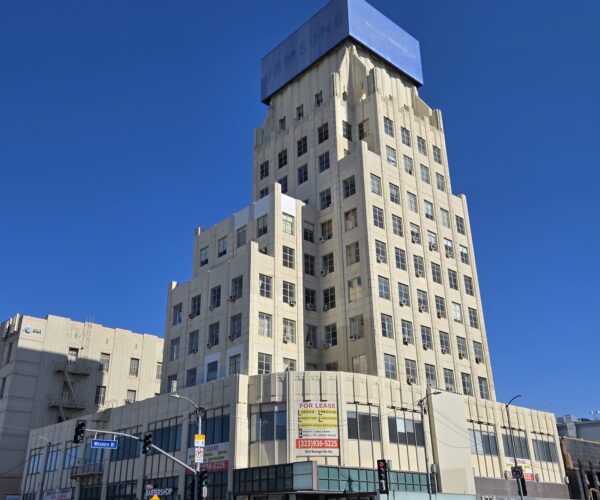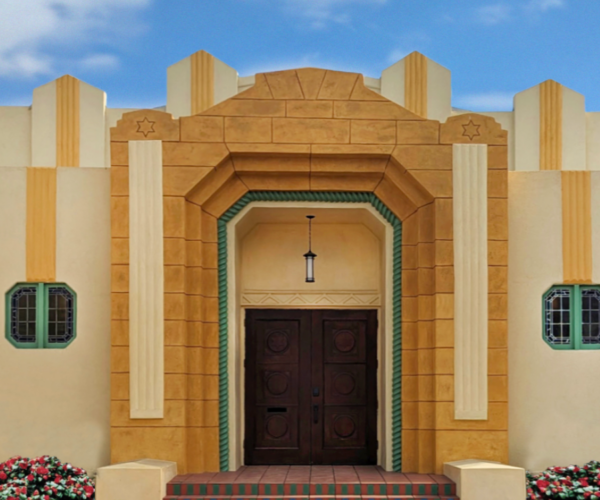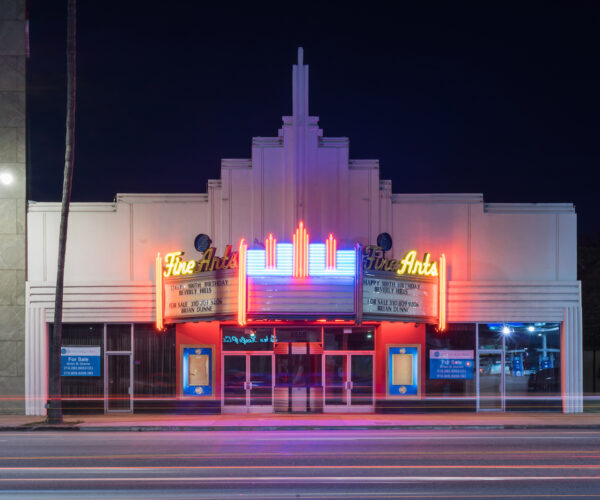
Place
Pantages Theatre
The 1930 Pantages Theatre can hold claim to two “lasts”: the last movie palace to be built in Hollywood and the last venue erected by vaudeville circuit owner, Alexander Pantages. Designed by B. Marcus Priteca at the epitome of the Art Deco era, from sidewalk to stage, the Pantages dazzles theater-goers with chevrons, zigzags, starbrusts, and exotic figures.
Place Details
Address
Get directions
Architect
Year
Style
Decade
Property Type
Community
Opening on June 4, 1930, the Pantages Theatre can hold claim to two “lasts”: the last movie palace to be built in Hollywood and the last venue erected by vaudeville circuit owner, Alexander Pantages.
Designed by B. Marcus Priteca at the epitome of the Art Deco era, from sidewalk to stage, the Pantages dazzles theater-goers with chevrons, zigzags, starbrusts, and exotic figures. The 2,691-seat theatre (originally seating 2,812) features a lavish, forecourt whose ceiling’s gold, silver, and bronze-colored starbursts radiate in multiple, geometric patterns.
In the lobby, two grand, carpeted staircases rise to either side below massive, Art Deco-styled chandeliers. The starburst ceiling pattern is repeated within the auditorium, but on a far grander style, backlit with deep blue hues that add further depth and dimension to its scale.
The theatre, stage, and backstage areas were designed to accommodate lavish vaudeville performances as well as films, but as the depression wore on, the live stage acts proved too expensive and the theatre, with occasional exceptions, became an all-movie venue.
By 1932, financial strains – and a very high-profile personal scandal – forced Pantages to sell his theatre to Fox. Then in 1949, RKO owner Howard Hughes purchased the theatre, moving his private offices into its second floor. It was during his ownership that the Pantages hosted the Academy Awards for an eleven year run (1950 – 1960), including the first telecast of the ceremony (1953).
Pacific Theatres purchased the theatre in 1965, covering many of the art deco decoeative elements with curtains and dropped ceilings. In 1977, the theatre shifted to live stage productions exclusively.
In 2000, the theater underwent a massive rehabilitation project, uncovering its Art Deco grandeur, receiving a Conservancy Preservation Award in 2001.
Now operated by a subsidiary of The Nederlander Organization, the fully-restored Pantages is one of the city’s highest-grossing venues for live stage and Broadway-style productions, packing in audiences for such lavish hits as The Lion King, Wicked, and The Book of Mormon. With a location a few steps from “Hollywood and Vine,” a major hotel complex and a subway station directly across the street, and numerous development projects newly-announced or underway, the best years of the Pantages may well lie in the future.


